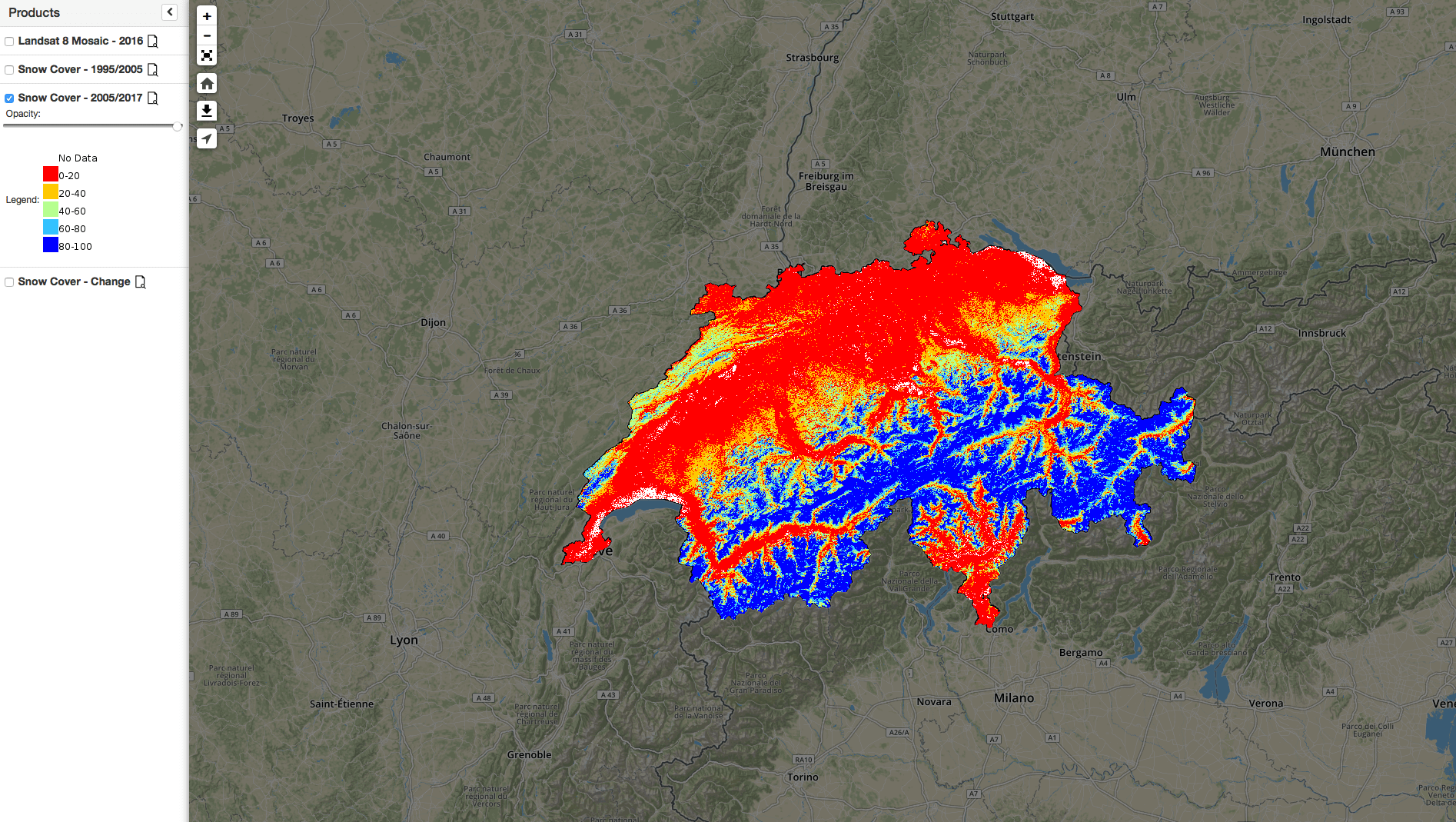
As skier numbers fall in Switzerland and ski schools report a reduction in the numbers of learners, a new study paints an even more depressing picture – Switzerland is rapidly losing its snow.
Researchers at the University of Geneva and at the United Nations GRID-Geneva environmental data center have analyzed satellite images of the country over 2 separate periods, from 1995-2005 and 2005-2017, and can show how much snow cover Switzerland has lost in the last 20 years.

In the past, almost two-thirds of Swiss territory was covered by snow; now it is only about half, according to that satellite data. The area of Switzerland given over to permanent snow shrank in the period studied – from 27% over the 1995-2005 period to 23% from 2005 to 2017. The loss is some 810 square miles, an area almost twice the size of Los Angeles.
The main reason is global temperature rise.
Switzerland’s mountain areas saw record snowfall this past winter of 2017–18, but overall the country is rapidly losing its snow cover and global warming is probably the cause. The study also shows that the area of Switzerland given over to eternal snow (where there is an 80 to 100 percent chance of snowfall) also shrank – from 27 percent over the 1995–2005 period to 23 percent from 2005 to 2017.

Detailed information about snow cover is essential for policy planning on environmental issues, said the University of Geneva in its media statement.
“Beyond the economic issues related to tourism, other questions arise such as flood risk management or water supply, given the storage role that snow plays, retaining water in winter to release it in spring and summer,” said the researchers.

The snow research comes as new figures for people taking ski lessons with the main Swiss school are released. Nationally, over the whole season, over 1 million ski lesson hours since 2008 have been lost, and the number of skier days across the whole of Switzerland has shrunk from nearly 30,000,000 to just above 20,000,000.
And although this study is specific to Switzerland, it is likely there are similar data and conclusions from the other parts of the Alps, and potentially other mountain regions across the globe.